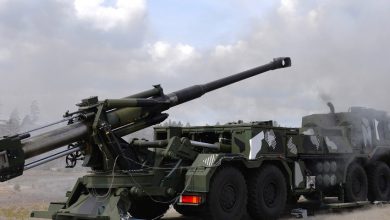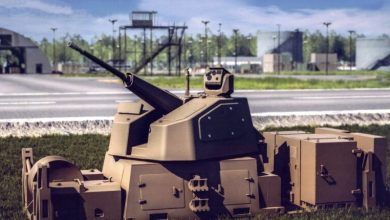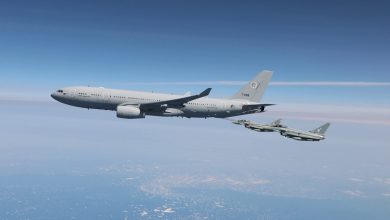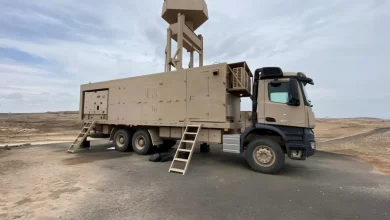A game changer: Kamikaze Unmanned Aerial Vehicles

Türkiye’s branded stance in the field of drones, having an army that produces and uses technologies that change the course of wars is an indicator of the increase in its global power
Kamikaze drone systems have been added to the concepts of Unmanned Aerial Vehicle (UAV) and Unmanned Combat Aerial Vehicle (UCAV), which have been on the agenda of the world in recent years. While the use of kamikaze products manifests itself on many battlefields, the use of these products was most commonly encountered in the Russia-Ukraine war.
Russia-Ukraine war and the development of kamikaze products
If we look at the Russia-Ukraine war in terms of the development of kamikaze products; on October 22, 2022, after 40% of Ukraine’s critical infrastructures were hit with Iranian-made Shaded kamikaze drones, the whole world started talking about drones working with motorcycle set. Iran produced an inexpensive system and released these products to the media in early 2021. The Shaded-136 was introduced to the world as a free-range drone and also as a munition. Technically, this system has the features of a missile and a drone, while it takes free-floating ability from a drone, it takes its warhead and target-oriented capabilities from a missile. While Iran was selling these products to Russia, the American Switchblade company gave the kamikaze drones to the Ukrainian army. However, the American drones were not used very effectively on the front line. The distinctive feature of the Iranian kamikaze drone was its distance and the large warhead it carried.
So is there a need for such a large distance? This question pushed us to look at the distances between the area where the product is used and the area where it is launched, and we have determined the distance between the first take-off point and the target, which does not exceed 50 kilometers. The distances used in the attack with Iranian drones on oil facilities in Saudi Arabia in 2019 were not seen very often in the Russia-Ukraine war. Although Russia renamed its Shaded-136 products as Geran-2 at the beginning of the war, it was known that the products were Iranian Shaded-136. Although it is said to work with the Russian system Glonass, which is similar to GPS, it is reflected in the American open-source reports that the product actually works with the civilian GPS system.
The Kamikaze Shaded-136, which makes the sound of a scooter engine, uses a moped engine. Launching an application that listens to this sound, Ukraine is trying to determine the direction of the target. It provides feedback to the defense system of the products with common cloud networks and markings on geographical maps. As a result, a Shaded-136 was dropped in 2022. Of course, in order to be used in this way, internet connection must be widespread throughout the country and on the front line. Iran, which had difficulties in production in 2023, could not develop the product and Ukraine continued to shoot down kamikazes with its existing defense systems.
Russia, which uses this product as an asymmetrical war element, reduces the cost of war with it. In addition to the difficulty of meeting the costs of the war, the real indicator that will change the course of the war will be the economic balance. Ukraine received and deployed the modern air defense system NASAMS in 2022. Although the air defense missiles Aim-9, IRIS-T, and Amraam are in their stocks, these missiles are very expensive weapons compared to Iranian kamikaze Shaded-136 drones. It is possible to drop this system cheaper from the ground with rifles. For this, Ukraine used the C-Ram product. Since products such as C-Ram and CWIS have a distance of about 1.5 kilometers, it has not been an effective defense system against Kamikaze drones.
At the moment, Ukraine is working on its own kamikaze drone and also supplies kamikaze drones from countries such as America and Poland. Although Ukrainian President Volodymyr Zelenskiy confirmed that they shot down planes, helicopters, and Shadeds, confirming that this product was an Iranian product, neither Russia, Iran nor China has claimed these products yet.
The concept of kamikaze drones in Türkiye
In recent years, Türkiye has taken its capabilities, especially in UAV and UCAV to the next level and focused on unmanned jets, aircraft systems, and space systems and introduced very successful products in 2023. We saw manned and unmanned aircraft such as Kızılelma, Anka-3, and Hürjet. The gains made with these products and the development of mass production capabilities are clear proof of the stage of the point reached in Türkiye. In addition, Kamikaze drone products such as Alpagut, Azab, and Kargı, which have been produced in recent years, differ from their competitors with their technical features and operational ease of use. Türkiye’s branded stance in the field of drones, having an army that produces and uses technologies that change the course of wars is an indicator of the increase in its global power. With an investment like TCG Anadolu and the UAV and SİHA to be lifted from the sea, the gates of dominance both in the seas and in the air have been opened and another conceptual power has joined Türkiye. Kamikaze products will be added to the inventory of all countries soon, and new products and new companies will work in this field in terms of defense technologies to be developed for these products. There are many companies working in this field in Türkiye as well.
Türkiye, which produces kamikaze technologies, can deliver these products to the battlefield with platforms such as TCG Anadolu. Türkiye, which develops detection systems for such products and defense systems for kamikaze products, has become one of the first 3 countries in this field in the world. The use of these technologies by the soldiers of friendly and allied countries and environmental tests obtained in different geographies ensure that the products are constantly updated.
A controller for each soldier instead of a rifle
The Russia-Ukraine war showed us that a new asymmetric war has begun. This asymmetric war brought asymmetric supply, logistics, and asymmetric training to our agenda. In this war, instead of rifles and long-barreled guns, soldiers carried drone controllers. The soldiers, whom we saw with First Person View (FPV) glasses instead of binoculars, fought by seeing the surroundings through the cameras on the drone or provided logistics to the fighting teams. The supply and production of these products required serious capacities.
What types of products were used in this war and how drone pilots were trained?
In this regard, many drones developed for commercial use have turned into weapons with the useful load they carried during the war. Rotary and fixed-wing drones, which are used in a wide range from 200 grams of payload to 50 kilograms of payload, suddenly appeared on the enemy troops or armored vehicles with a drop device and caused serious destruction. The latest kamikaze drone attack on the Russian flag in the Kremlin palace was broadcast in the main news bulletins of many countries. Computer and simulation-based training systems were used for these products. This training was for commercial products. During the war, drone pilot training was completed quickly with computer-connected control to meet the needs of the armies who could use drones.
China, which has been able to command around 200 kamikaze drones at the same time with many UAV studies since 2017, has also signaled that it will use many different products in the future with its studies on this subject and its mass production capability. When we follow the technological course of the war, the development and use of asymmetrical elements have been directly proportional to the morale of the army. It seems that we will see kamikaze drones more on the fronts as an element of superiority and asymmetric warfare.
Source: AA





